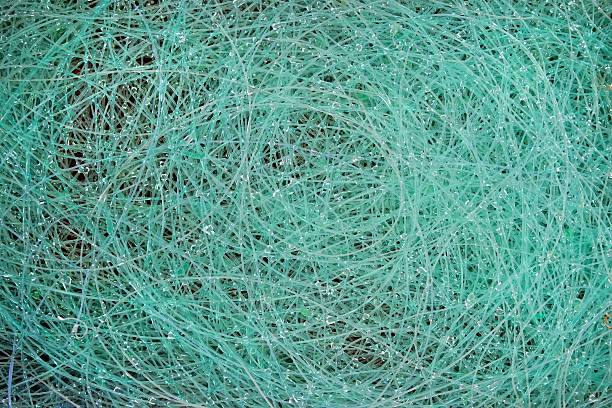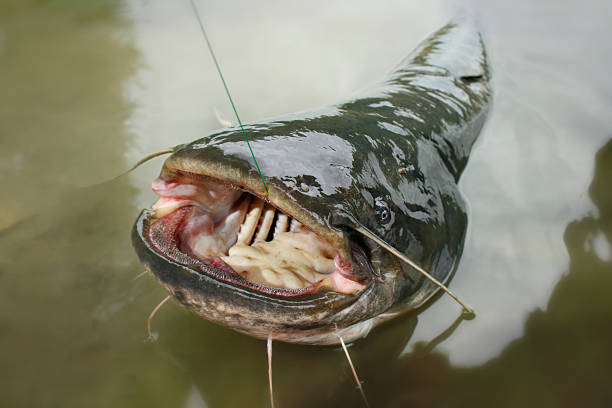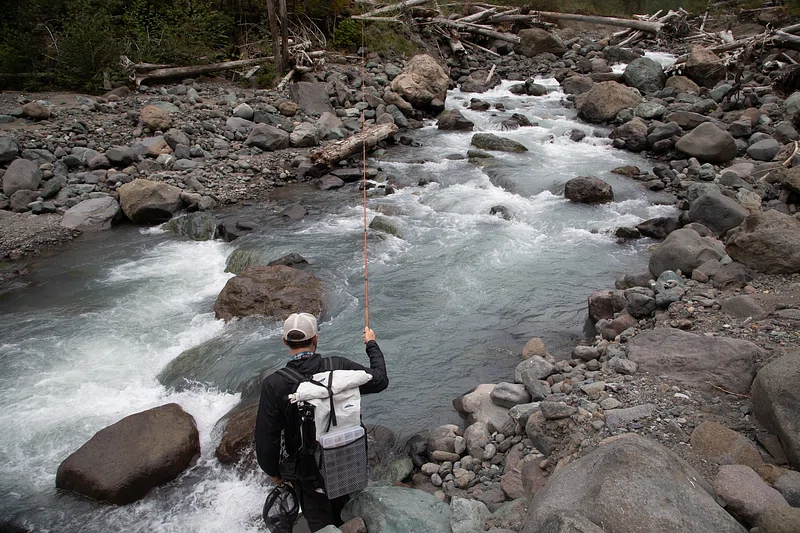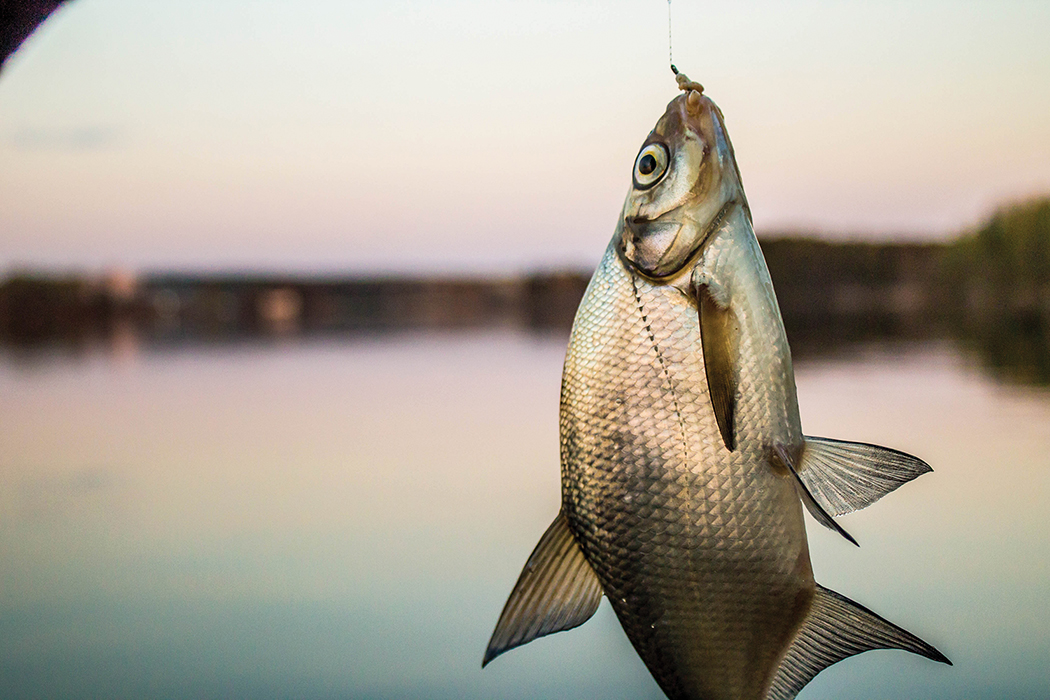
Secrets of Fishing for bream

15 min read
Let’s talk about bream fishing. Not the flashy, adrenaline-pumping kind of fishing that gets splashed across magazine covers, but the methodical, deeply satisfying pursuit that has filled keepnets and created fishing memories for generations.
I’ve spent more dawn hours than I care to count watching float tips disappear to the distinctive, confident pull of a decent bream. There’s something almost hypnotic about it—the gentle plod, the steady resistance, and then that gorgeous bronze flank breaking the surface.
But here’s the thing about bream fishing: while it might seem straightforward, the difference between blanking and bagging up often comes down to subtle details that many anglers overlook. Today, I’m sharing some closely-guarded secrets that have transformed my own bream fishing over the years.
Understanding Bream Behavior: The Foundation of Success
Before we get into tactics and tackle, let’s talk about what makes bream tick. These broad, bronze-flanked creatures are shoal fish with distinct feeding patterns and preferences that change throughout the seasons.
Unlike predatory species that hunt alone, bream move and feed in groups—sometimes massive ones. Find one bream, and you’ve likely found dozens more. They’re primarily bottom feeders with downward-facing mouths perfectly evolved for sifting through silt and gravel for food.
What many anglers don’t realize is just how methodical bream are in their feeding approach. They don’t dart in and grab food like chub or barbel—they systematically work through an area, often moving like a slowly advancing carpet across the lake or river bed.
I learned this lesson years ago on a Midlands reservoir. After catching nothing for hours, I noticed what looked like bubbles tracking across a plateau. Moving my baits to intercept this bubble trail resulted in seven bream over 5lbs in quick succession. They weren’t scattered randomly—they were moving as a unit, feeding as they went.
Location: Finding the Bronze Platters
Successful bream fishing starts with being in the right place, and bream have some very specific habitat preferences that change with the seasons.
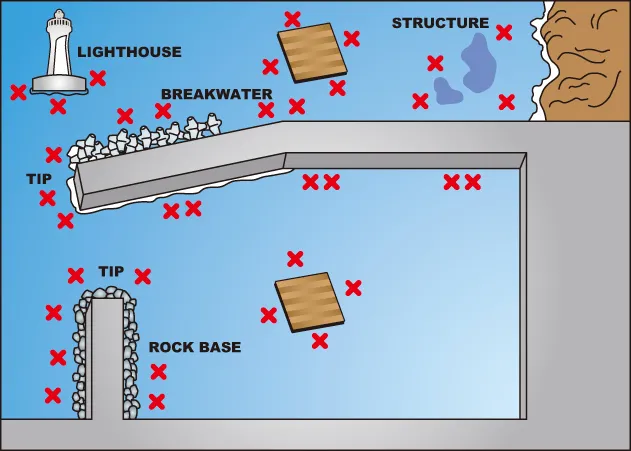
Spring Locations
In spring, bream become more active as water temperatures climb. They’ll often be found in these key areas:
Shallow bays with dark bottoms that warm quickly in the spring sun. These areas heat up faster than the main lake, attracting bream looking to shake off winter’s lethargy.
Pre-spawning areas near weed beds or reed lines where they’ll eventually lay eggs. In the weeks leading up to spawning (typically May-June), massive shoals can gather in these transitional zones.
One spring tactic that’s served me well is to look for areas where the early morning sun hits the water first. Bream will often move to these warming zones and feed more confidently as the shallow water temperature rises throughout the day.
Summer Hideouts
When summer arrives and water temperatures peak, bream typically follow one of two patterns:
Deep water sanctuaries where oxygen levels remain stable and temperatures are moderated. Look for the deepest parts of lakes or slow-flowing rivers, especially near drop-offs.
Thick weed bed margins that provide both food and cover from above. The weed produces oxygen and harbors natural food items, making these areas particularly attractive during hot weather.
A lesser-known summer secret is targeting bream during periods of low light—dawn, dusk, and even night fishing can produce exceptional results. During a heatwave a few years back, I switched to fishing from 4 AM until 9 AM and caught more bream in those five hours than I had in the previous five days of daytime fishing.
Autumn Feeding Grounds
Fall presents a golden opportunity for bream anglers as the fish feed heavily before winter:
Deeper silty areas become prime real estate as natural food items become concentrated in these zones.
Areas where dying weed is releasing nutrients often attract huge shoals of feeding bream as insects and crustaceans abandon the decaying vegetation.
My favorite autumn approach is to look for areas where leaves have fallen into the water and begun to decompose. These leaf litter zones attract all sorts of invertebrates, which in turn draw in hungry bream looking to pack on weight before winter.
Winter Hideaways
When temperatures plummet, bream fishing becomes more challenging but no less rewarding:
The deepest holes in lakes and rivers provide stable environments where bream can wait out the cold with minimal energy expenditure.
Slack areas off the main river flow offer refuge from energy-sapping currents while still providing access to food items washed downstream.
The real secret to winter bream success? Patience and precision. A carefully placed bait in a deep hole, left undisturbed, will often produce when all else fails. I’ve had some of my best winter bream catches by finding a deep hole, baiting it minimally, and waiting… sometimes for hours. Patience truly is a virtue in cold-water bream fishing.
Groundbait Secrets: The Foundation of Success
Ask any successful bream angler about their edge, and groundbait will likely top the list. Bream respond to groundbait like no other species—when done right, it can transform your session from hopeful to incredible.
The Perfect Consistency
The first secret isn’t about exotic ingredients but something more fundamental: consistency. Bream groundbait should be mixed to a specific consistency depending on water depth and conditions.
For shallow water (under 6ft), a relatively dry mix that breaks up quickly spreads attraction efficiently without overfeeding. For deeper water, a damper mix that holds together until it hits bottom ensures your feed reaches the target zone.
I always squeeze a ball of my mix before casting—it should hold together firmly when squeezed but break apart with gentle pressure from your thumb. Too wet, and it becomes a concrete-like lump that bream struggle to process; too dry, and it disintegrates mid-flight, creating a disappointing cloud that never reaches the bottom.
Sweet vs. Fishy: The Great Debate
Conventional wisdom suggests bream prefer sweet groundbaits—and there’s definitely truth to this. However, the real secret lies in combining sweet and fishy elements to create an irresistible combination.
My go-to mix combines:
- 50% sweet biscuit-based groundbait
- 30% fishier, darker groundbait
- 10% crushed hemp
- 10% fine breadcrumb for binding
This combination provides multiple attractors—the sweet elements draw them in from distance while the fishier components hold them in your swim once they arrive.
On heavily fished commercial venues, I’ll often buck the trend entirely and go purely fishy when everyone else is using sweet mixes. This different approach can sometimes trigger a feeding response from bream that have become wary of the standard sweet offerings.
Particle Integration
While many anglers add particles to their groundbait, the secret is in how you integrate them. Rather than mixing everything at once, try this approach:
- Mix your base groundbait to perfect consistency
- Add soaked and prepared particles separately at the bank
- Allow the mix to rest for at least 30 minutes before use
- Add a small amount of liquid enhancer just before casting
This staged approach prevents particles from absorbing too much moisture from your groundbait, maintaining the perfect consistency while ensuring your particles remain intact and attractive.
My personal edge? Adding a handful of dead maggots to my groundbait just before casting. They add movement as they slowly fall through the water column and provide high-value food items that confidence-boosting bream rarely ignore.
Hookbait Selection: Beyond the Obvious
While maggots, worms, and sweetcorn are standard fare for bream fishing, the real secrets lie in presentation and combination approaches.
The Cocktail Effect
Bream respond incredibly well to hookbait “cocktails” that combine different flavors, textures, and visual appeal:
Worm and caster combo: Thread a red worm up the shank and add two or three casters on the hook point. This provides movement, scent, and a visual trigger all in one package.
Sweetcorn and punch bread: A grain of sweetcorn with a small disk of punch bread creates a critically-balanced presentation that falls slowly and naturally through the water.
One less conventional approach that’s produced some of my biggest bream is using a small cube of luncheon meat paired with a single grain of fake corn. The meat provides a powerful scent trail while the corn adds crucial visibility.
Size Matters
The size of your hookbait can make all the difference when targeting quality bream. While small baits like single maggots or casters might produce numbers, they often attract smaller fish.
For specimen bream, particularly in waters where they grow large, don’t be afraid to use substantial baits:
- Double or triple worm hookbaits
- Large balls of worms and casters combined
- Sizeable pieces of bread flake
- Multiple grains of corn
The Power of Scent
Bream have exceptional scent detection capabilities, and this is an area where many anglers miss a trick. Beyond standard liquid additives, consider these scent secrets:
Natural enhancers like crushed hemp oil, betaine, or molasses added sparingly to hookbaits can make them stand out in a well-baited area.
Marine-based attractors like krill, squid, or shellfish extracts have proven incredibly effective, particularly for larger, more cautious bream.
Perhaps my most closely-guarded bream secret is using a tiny amount of WD-40 wiped on bread hookbaits. Before you dismiss this as an old wives’ tale, the petroleum-based scent contains ingredients that mimic certain amino acids found in natural foods. Try it—the results might surprise you. (Just keep it away from your line and never apply it directly to the water.)
Tactical Approaches: Reading the Water
Beyond bait and location, tactical flexibility separates occasional bream catchers from consistent performers.
The Patience Game
Bream fishing is rarely an instant success. The secret that many anglers miss is the importance of building your swim methodically:
- Start with 4-5 tangerine-sized balls of groundbait
- Allow at least 30 minutes before your first cast
- Top up with smaller amounts every 45-60 minutes
- Resist the urge to move too quickly if bites don’t materialize
I’ve witnessed countless anglers pack up and leave just as their swim was beginning to develop. On one memorable canal session, I watched three different anglers come and go from a prime spot before I moved in and caught 30lbs of slabs within the first hour—they’d baited up perfectly but lacked the patience to reap the rewards.
Weather Patterns and Barometric Pressure
While many factors affect bream feeding, barometric pressure is one that’s often overlooked:
Stable or slowly falling pressure typically coincides with the best bream fishing. These conditions often precede weather fronts and can trigger feeding frenzies.
Sharp rises in pressure following storms frequently shut down bream activity entirely.
I’ve started keeping a simple log correlating my catches with barometric readings, and the pattern is undeniable. My five best bream sessions of last year all occurred during periods of steady, slightly falling pressure.
Feeding Rhythms and Timing
Bream often feed in distinct windows rather than continuously throughout the day. Understanding and exploiting these windows is crucial for success:
Dawn and dusk periods are prime time, particularly during warmer months.
Two hours either side of midnight can be magical on venues where night fishing is permitted.
The hour following light rainfall often triggers feeding as food items are washed into the water.
One technique that’s served me well is what I call the “patient predator” approach. Rather than constantly recasting or checking baits, I’ll set up two rods—one fishing conventionally and one with a slightly different bait or presentation. I’ll leave them undisturbed for at least an hour, allowing any bream in the area to gain confidence and settle over my baited area.
Tackle Refinements: The Details That Matter
Let’s talk tackle—not to recommend specific brands, but to highlight the subtle refinements that can transform your bream fishing:
Hooks: Strength Without Bulk
For specimen bream, hook choice is critical. Rather than using light wire hooks that might straighten on a lunging slab, opt for medium-wire patterns in sizes 10-14 depending on bait size. Wide gapes provide excellent hookhold without being overly visible or bulky.
The secret many don’t realize? Hook points matter enormously. A needle-sharp hook will set itself with the distinctive, slow pull of a feeding bream. I test every hook against my thumbnail before use—if it doesn’t stick slightly when drawn lightly across, it doesn’t make it onto my line.
Mainline Considerations
Line diameter affects everything from casting distance to bait presentation. For bream fishing:
3-5lb monofilament offers the perfect balance of strength and subtlety for most situations.
Low-visibility colors like brown, green, or clear perform better than high-vis alternatives.
One approach that’s revolutionized my own bream fishing is using tapered mainline—starting with a slightly heavier section near the reel and tapering to a finer diameter at the business end. This provides casting weight while maintaining presentation subtlety.
The Forgotten Float Patterns
Float choice for bream fishing goes beyond simple buoyancy considerations:
Antenna-style patterns provide excellent bite detection for the distinctive, lift bites bream often produce.
Bodied waggler designs offer stability in wind while still allowing for sensitive presentation.
My personal preference, particularly for slightly towing water, is a loaded insert waggler. The slim profile cuts through any surface drift while the insert provides the sensitivity needed to spot even the most tentative bream bites.
Night Fishing: When the Big Ones Come Out to Play
If you’re serious about catching specimen bream, especially those elusive double-figure fish, night fishing should be in your arsenal. The cover of darkness gives bream—particularly the larger, more cautious ones—the confidence to feed more boldly.
Light and Sound Discipline
The first rule of night bream fishing is minimizing disturbance:
Use red light rather than white when absolutely necessary.
Avoid excessive bankside movement that creates vibration.
Keep conversation to whispers if fishing with companions.
I’ve witnessed the difference firsthand when fishing alongside less careful anglers. Their catches invariably suffer while more stealthy approaches consistently produce better results.
Bite Detection After Dark
Without visibility, bite detection becomes more challenging but no less important:
Isotopes or light sticks attached to rod tips or bite indicators provide visual indication.
Electronic bite alarms set to low sensitivity can be devastating for bream fishing.
Drop-arm indicators with minimal resistance allow for perfect bite registration.
My preferred night setup combines isotopes with lightweight bobbins for visual indication along with the subtle sound of the bobbin chain as an audible alert. This combination has resulted in fewer missed opportunities during those crucial midnight feeding spells.
Bait Adaptations for Night Fishing
After dark, visual appeal becomes less important while scent and vibration take center stage:
Stronger flavors and attractors can be employed without risk of over-stimulation.
Larger baits often produce better results as bream become bolder under cover of darkness.
Movement-creating baits like worms become particularly effective as they create vibration bream can detect from distance.
One night fishing edge I’ve discovered is using baits soaked in amino-rich liquids like condensed milk or molasses. These create powerful scent trails in still water, drawing bream from surprising distances.
Seasonal Tactics: Adapting to Nature’s Calendar
Successful bream anglers understand that these fish respond strongly to seasonal patterns. Adapting your approach to align with their natural cycle dramatically improves results.
Spring: Awakening and Pre-Spawn
As water temperatures climb above 10°C (50°F), bream become increasingly active:
Focus on shallower areas that warm quickly in spring sunshine.
Use highly visible baits as feeding becomes more sight-oriented.
Begin introducing more substantial groundbait as metabolism and feeding increase.
Spring presents a golden opportunity to target big female bream as they feed heavily before spawning. I’ve had my best results using sweetcorn and worm combinations during this pre-spawning window.
Summer: Post-Spawn Recovery and Growth
After spawning (typically May-June), bream patterns change significantly:
Males and females often separate into different shoals temporarily.
Feeding becomes more nocturnal during hot weather.
Deeper water becomes increasingly important as oxygen levels fluctuate.
My summer approach often involves fishing the margins of deeper areas where bream can move between cooler, oxygen-rich water and warmer feeding zones with minimal effort.
Autumn: The Feeding Window
Fall presents prime big bream opportunities as they feed heavily before winter:
Increase bait quantity to satisfy their growing appetites.
Focus on areas of dying weed where natural food becomes concentrated.
Be prepared for weather changes that can trigger spectacular feeding spells.
I’ve had my most consistent autumn success by locating deeper areas adjacent to shallower feeding zones, allowing me to intercept bream as they move between these areas as water temperatures fluctuate.
Winter: The Specimen Hunter’s Season
While overall activity decreases, winter can produce the biggest specimens:
Drastically reduce feed amounts to avoid overfeeding sluggish fish.
Focus on the warmest parts of the day when metabolism briefly increases.
Concentrate on the deepest available water where temperatures remain most stable.
One winter approach that’s proven particularly effective is using tiny PVA bags of crushed pellet positioned precisely alongside hookbaits. This creates just enough attraction without overwhelming cold-water bream.
Final Thoughts: Putting It All Together
Successful bream fishing isn’t about following a rigid formula—it’s about understanding these fascinating fish and adapting your approach to their behaviors, preferences, and seasonal patterns.
The true secret to consistent bream success lies in observation, patience, and attention to detail. Note water temperatures, weather conditions, and feeding patterns. Keep a simple fishing diary recording your captures alongside these variables, and patterns will emerge that guide your future sessions.
Bream fishing isn’t always about flat-out action. Some of my most memorable sessions have involved long periods of quiet punctuated by frantic bursts of activity as a shoal moved through my swim. Embrace these rhythms rather than fighting against them.
Whether you’re targeting your first slab or hunting that elusive double-figure specimen, the principles remain the same: locate their preferred habitat, present attractive baits appropriately, and feed with precision and purpose.
Master these elements, apply the secrets I’ve shared, and you’ll find yourself connecting with these beautiful bronze fish more consistently than ever before. And when that float slides away with that distinctive, deliberate bream bite, you’ll know that all your preparation and patience has paid off.
Tight lines, and may your keepnet be heavy with slabs!
